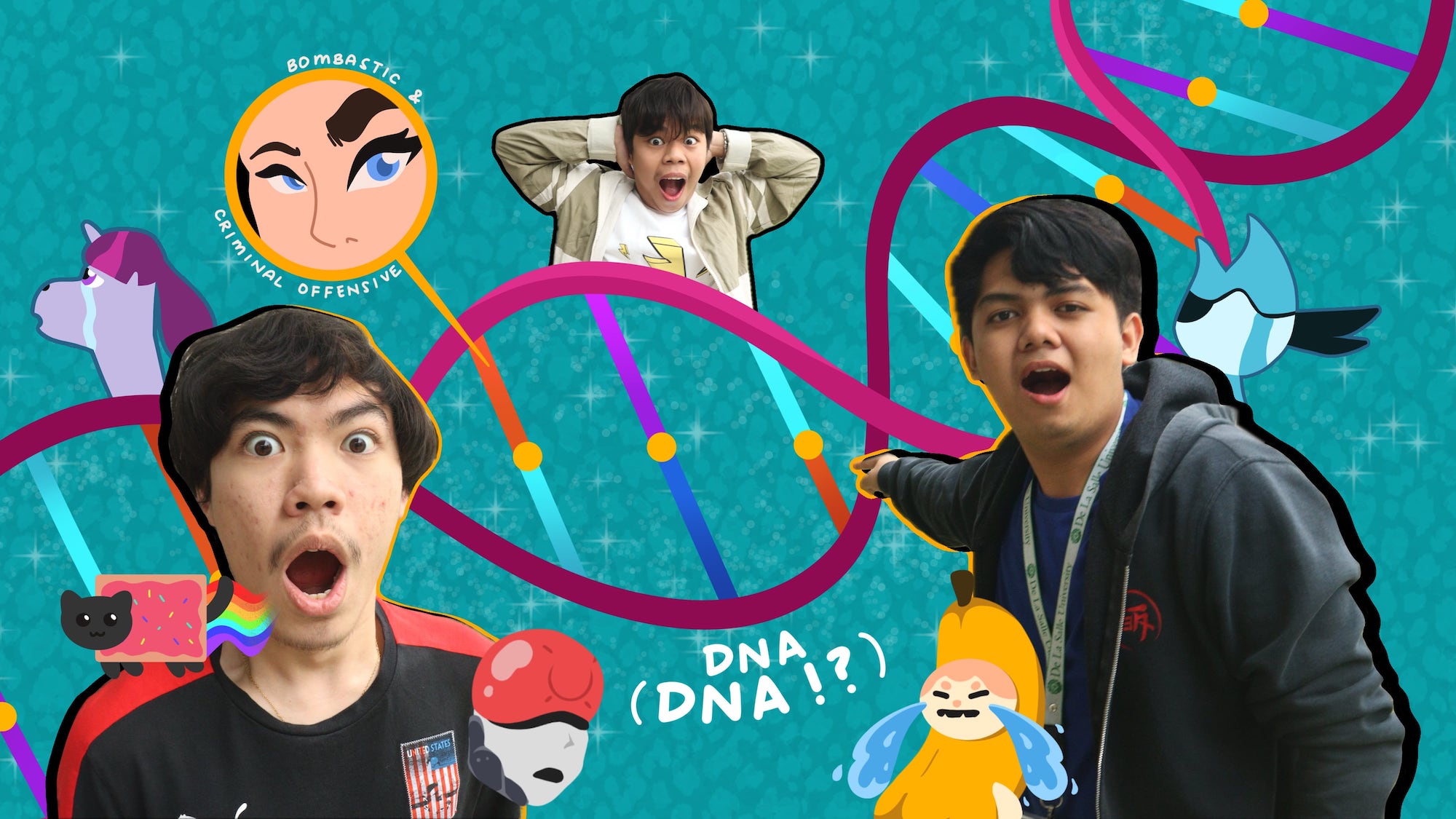Monsoon, a Cyborg Ninja from the blockbuster game Metal Gear Rising: Revengeance, once said, “Free will is a myth. Religion is a joke. We are all pawns, controlled by something greater: memes, the DNA of the soul.” As one of the greatest speeches of all time, Monsoon’s thoughts have irked the philosophers and geneticists of our time into questioning our genetic blueprints, “Are memes really the DNA of the soul?”
After all, the DNA marks the entire code of a human being—it paints their appearance, culture, and habits. In an interview with The LuhSallian, Biologist Dr. Watsi Tooya from the Hospital of United Healthcare (HUH) explains that our DNA sequence holds the key to understanding our roots. “I do understand the sentiments of Monsoon,” Tooya begins. “I mean, society will always have that hint of control over you regardless of the culture you are born into.” According to him, our genes have been wired for us to engage in some form of behavior as a means of survival; “It just so happens that the means of survival is memes.”
A 2020 paper published by HUH explored how memes possess a unique ability to encapsulate the consciousness of society. Because of how deeply ingrained memes are in human DNA, they reflect our deepest desires, fears, and absurdities. For this reason alone, Tooya and his team believe that their study is far-reaching, despite how most PhD holders find the notion of DNA of the soul as absurd—or is it?
Memeology
In the book Memeology, memetics, and me, Nobel Prize winner in Physiology Joe Mamah expounds on the nature of memes. Memes are humorous pieces of content that are reproduced online. Mamah clarifies the connection between the nature of memes and genetic characteristics: “Like genes, they can spread rapidly or ‘go viral.’” It is these very genes that compel us to create inside jokes, stay chronically online, and have no friends.
Even art, one of the greatest forms of human expression, is nothing more than a meme. Cultural icons such as the Mona Lisa and the first widespread meme, “Kilroy was here,” allowed people to understand themselves through their designs. With this, the genetic nature of memes transcends generations and reality. They are hereditary and inescapable; even boomers older than Juan Ponce Enrile could name at least one meme that reflects their cultural and generational identity.
This phenomenon ties in well with the general idea of the Gene Theory and Mendelian inheritance. As shared by Dr. Neva Gona-Givup, the leading genetic scientist from Rikurolling University, “Memes, like genes, are passed from parents to offspring through some form of reproduction.” Now, with the advent of the internet, it becomes easier than ever to reproduce memes. The emergence of social media platforms like Facebook and X allowed internet memes to achieve global recognition. From insanely viral memes like TikTok’s chocolate-drizzled strawberries to more niche surrealist memes that only those who “get it” can understand, memes have embedded themselves as integral parts of modern culture.

Meme therapy
With such extensive research on the subject, it is clear that memes are essentially DNA. They both evolve and propagate throughout populations through the natural selection of having “fine taste.” Genes may also evolve through diverse processes of replication and mutation, much like how memes can transform as they are shared on various platforms or by individuals.
Tooya delves into this theory even further. In his paper, he argued that memes, being the essence of our existence, can be pushed to their metaphysical limits and connected to the idea of the soul.
The soul is a concept of self. It represents the substance of what makes us human, facilitating individuality and humanity in a complex universe. Similarly, memes encompass our shared realities and act as a medium of expression. As a unit that fosters different manifestations of human identity such as art, emotions, and personalities, memes reflect the universal quality of human experiences and connection, establishing their nature as the DNA of the soul.
Unwinding the strands
Acknowledging memes as the DNA of our souls can revolutionize our evolution as a species. If enough memes are created, replicated, and transformed across societies and generations, cultural diversity is stimulated, and this then enriches human innovation. Moreover, the interconnectedness of the 21st century speeds up the process of evolution, making it possible to expect a whole new species of humans, Homo memecus, in a few millennia.
Looking back, our entire existence has been nothing more than a joke. Charles Darwin’s theory of evolution can now use some revision, considering how billions of years of evolution have led us back to memes. There is no survival of the fittest, only memes.
As the great villain Joker once said, “We live in a society.” We live in societies built on memes—little pieces of culture. It is this very DNA that is embedded into our cells. It is us who put the “me” in memes.
This article was published in The LaSallian‘s Spoof 2024 issue. To read more, visit bit.ly/TLSSpoof2024.



